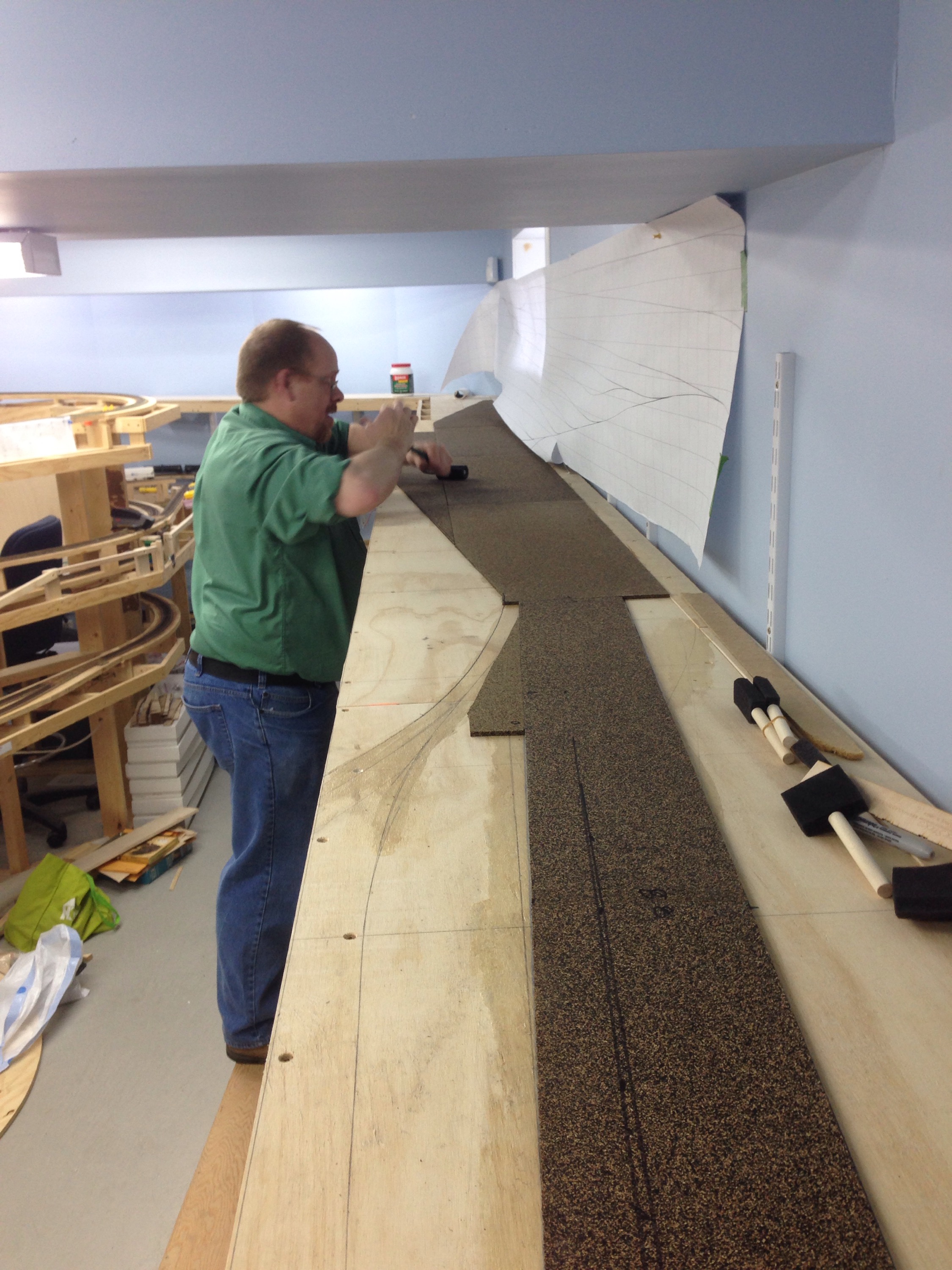On complex track work
On April 27, 2014, I sent out the following notice to my operating crew:
Effective immediately, all Port Alberni freights are annulled, account lack of destination trackage.
I had pulled up the entire temporary staging yard in the space of a couple hours, salvaging the track and turnouts for later use, and that left any chance of a Port freight running to nil. In Hunt for Red October, Captain Ramius said that “on his arrival in the new world, Cortez burned his ships. Thus, his men were well motivated.” I had effectively done the same thing.
With the temporary yard gone, I could get to work on building the proper one, and after acquiring appropriate materials (ie: a full box of sheet cork and way too many strips), Cam and I got to work on laying that down and securing it with contact cement. (Seriously, anyone who uses white/yellow glue for cork needs to learn about Contact Cement.)
After that was all thoroughly sanded, tracklaying could begin. The first half of the Port trackage is rather complex. I spent on the order of several evenings fitting the skeletons of the turnouts together and discovered that I’ll have a route (not terribly likely to be used though) where you can travel about eight plus feet and not have the wheels touch any length of flex track – yes, all turnouts for 8 feet!

Fitting these turnouts together with a large amount of cutting, desoldering and resoldering bits to make crossovers, and butting points up close to the frog of the previous turnout all proved challenging but achievable. I would learn later that fitting the wooden quicksticks underneath would be just as much of a challenge.

The past couple weekends I’ve been getting the finished turnouts all spiked down and linked with bits of flex, along with trackage into the pulp mill.
 I’ve got to spike this all down, but this represents the difficult stuff. The yard will be easy, but time consuming with all the drilling and spiking. The last spike is in sight, likely with completion of track work to be later this summer.
I’ve got to spike this all down, but this represents the difficult stuff. The yard will be easy, but time consuming with all the drilling and spiking. The last spike is in sight, likely with completion of track work to be later this summer.



Leave a Reply